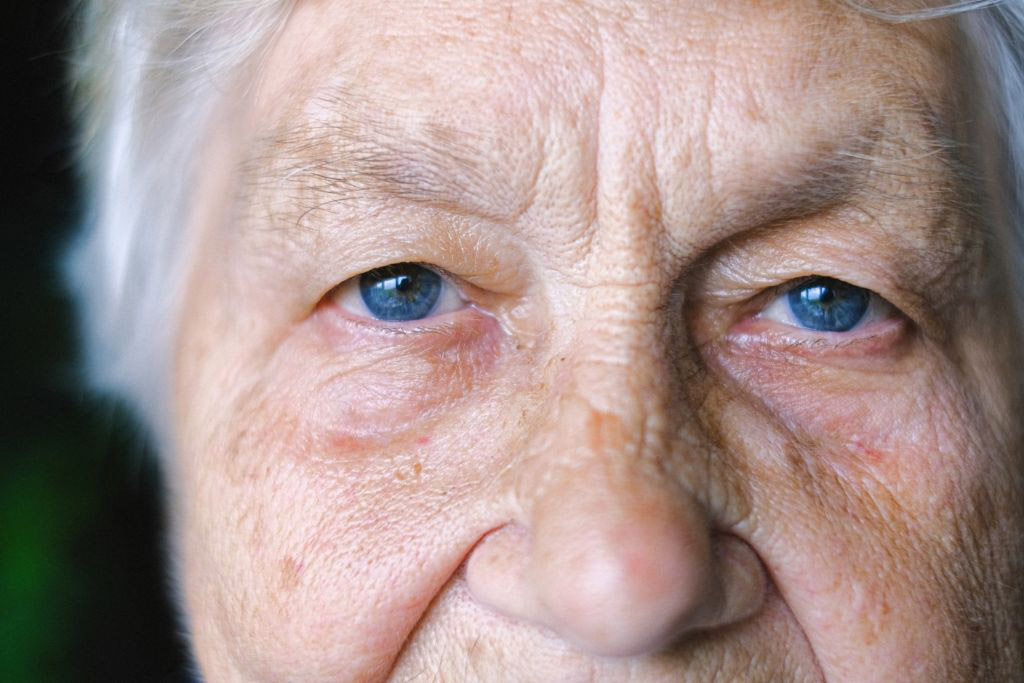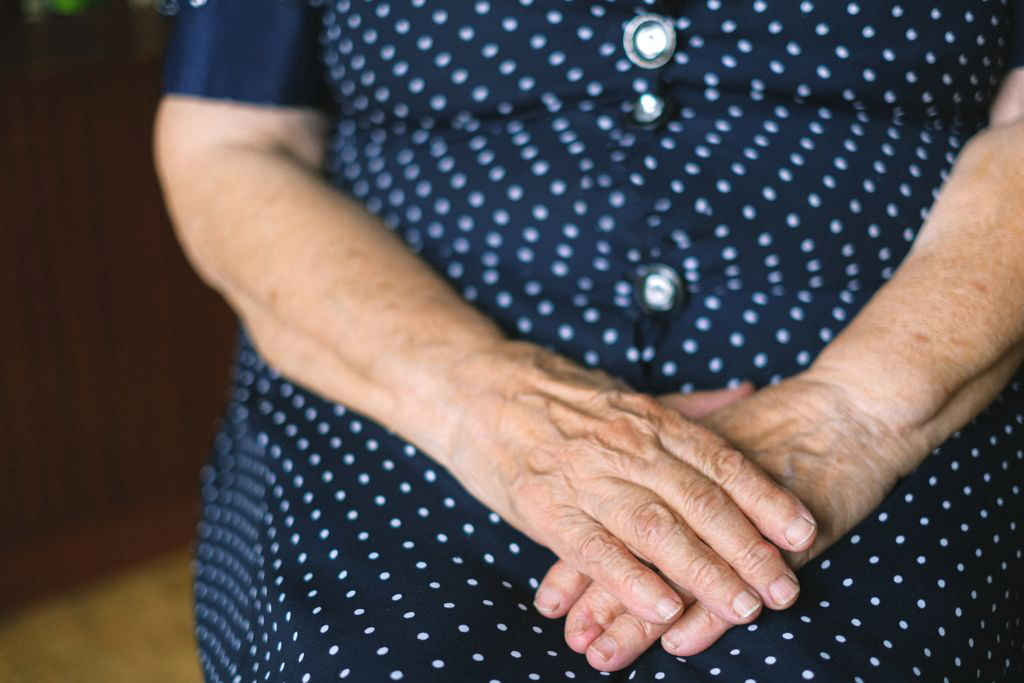Besides being a photographer, I am also a Health Care Assistant in a local (UK) Residential Home that specialises in dementia care, although some of our service users live without any cognitive impairment. We have been thinking for a while how we could also support their families, since COVID-19 made it very difficult for them to see their loved ones. That’s how I found myself taking photos of our residents. Due to my years of experience in care, I was aware of how difficult it would be to set up a nice atmosphere. I still decided to take on the challenge.

The most important thing for photographers is lighting. Taking sharp, dramatic photos is virtually impossible without the right lighting. Setting up a corner as a studio in the care home was not going to happen. With dementia and elderly subjects, sensory issues are very common and most of the service users cannot tolerate the harsh lights. It would also be rare for them to sit down and be still for a few minutes. Some people are constantly on the move, as restlessness and distractibility are also quite common.
I had to choose just the right time of day. I had an advantage as a staff member. I know their daily routines and, more importantly, my subjects themselves. If this were an unfamiliar location, I would try to visit several times before the actual shoot. These visits are essential, as you really must learn about the home’s routines and allow the residents to get familiar with you.
For my lighting, I had no chance to set up anything technical or fancy. Flashes and speedlights will not work easily, either, since these can be very disturbing for patients. My only option was using natural light sources wherever I could, and finding the right settings for indoor lights. The easiest way I could carry this out was to have residents sit down in a nice comfy chair by a window. Ultimately, I was able to ensure that the light hit their face at the right angle, and that the person was comfortable. Showtime.
Having Photoshop knowledge helped, as well as having access to many Summerana actions from my membership. I used a Sony a7iii mirrorless camera for this project, and I used my “love-lens” – a Sony 50mm f/1.8. The settings I ended up using were as follows: The highest f-stop was 2.0; shutter speed set at 1/160sec; and the ISO set to 400.
Keep in mind, these were average settings. As I moved from room to room, I had to adjust my settings to accommodate the lack of lighting in some places. I found that the best way to take photos was to bring the residents away from others. This created a quiet, low-distraction space for an easy one-to-one chit-chat where I explained what was going to happen. Sometimes, we simply started talking about everyday things. In this way, I could prevent feelings of awkwardness and embarrassment, which often happens when people are in front of each other.

If you ever consider taking photos in this kind of setting, make sure you get as much information as possible from staff about the person you’re taking the photos of. Sometimes people living with dementia will treat you like you were friends for years. Some of them will recognise you as someone else from their life because your facial features are similar. If you are well prepared, these things are easier to manage. Another very important thing to know about elderly people who live with dementia is that emotions are always over-riding reality and truth. For example, if Mrs P. is anxious because she hasn’t fed her cat, you will need to ensure that her emotional needs have been satisfied. This will lead to successful photos and happy family members.
In Mrs. P’s situation, the best answer is not, “Your cat isn’t here.” This can lead to more anxiety, as she may now become worried or agitated about the non-existent cat. A response like, “Don’t you worry, I fed the cat before I came to talk to you,” addresses the need in the moment and tends to relax the person quickly. And trust me, talking about a cat is a lucky subject; it could be a deceased child or partner, which is much harder to address. This is another reason why getting as much information as possible is critical.
That being said, you are not a medical professional, and there’s no way you can have access to the patients’ care plans, nor should you. But you can and should rely on the caregivers who look after them. Because if any situation happens you can’t handle, they will assist you with sorting it out. Though it was easier for me, I still had to ask one of my colleagues to help with one of the ladies. The person was very tired and had an amazing life story which made it difficult for anyone to take a photo with a smile.
My co-worker helped me by using a doll. She did a dance behind me and shifted my subject’s attention to the baby, knowing that this would make the lady smile. It did work, and the result was absolutely stunning! Don’t be shy or afraid to ask for help. You will benefit from any kind of help you get from staff members. However, be aware that their workload is very high. If you get a short reply or feel they are rushing you, they are most likely not trying to be rude.
Be prepared to spend at least half a day on one session. You won’t regret it, I promise. This is the kind of portrait session where you will gain so much more than just money. You will gain skills, you’ll be able to listen to others, you’ll feel the satisfaction of making elderly people smile, and a whole lot more.

What I did definitely need after taking the photos, though, was Photoshop and the Summerana Everyday Workflow Essential Action Collection. I wanted to keep the photos as natural as possible, but some subjects had very bad under-eye circles. Fortunately, Summerana offers an action specifically for this matter. It was a lifesaver! Dodging and burning are also very important, and the light settings are easily editable with this action collection. Another tool you also need to use is the Spot Healing Brush. Many times, you’ll need to shave not only the gentlemen, but the ladies, too. This kind of photography is definitely a very unique and often difficult style, but it is also rewarding, and you get back more than you actually give.
It is hard to write about the experience briefly because there are a lot of aspects you need to be extra aware of. You need to be good with improvisation. You need to be confident without extra lighting, and you need to have a lot of to be successful at the end of an Elderly and Dementia Patient Session. The amount of knowledge I’ve gained from this whole session is amazing, and now I just cannot wait for my upcoming lifestyle shoot with them, which will be surely another beautiful challenge.